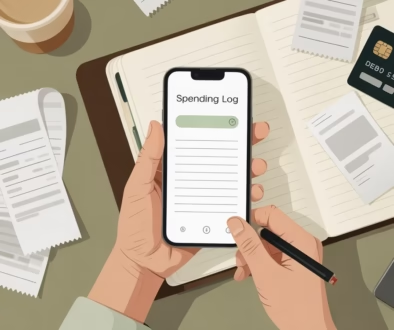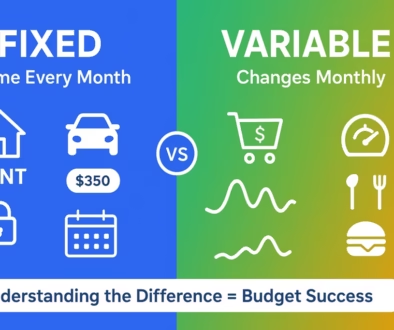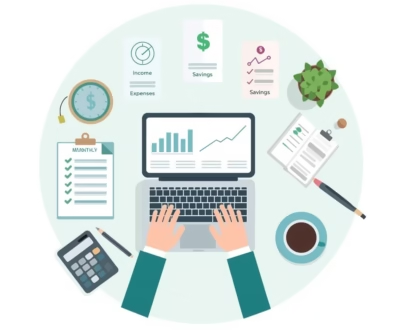How to Do a Mid-Year Credit Score Check—and Boost It Before 2025 Ends
Picture this: You’re ready to buy your dream home next spring, but when you apply for a mortgage, you discover your credit score is 50 points lower than you thought. Sound familiar? You’re not alone.
Thank you for reading this post, don't forget to subscribe!
Here’s the thing most people don’t realize: August is actually the perfect time to take control of your credit score. While everyone else is focused on back-to-school shopping or planning their year-end holidays, smart borrowers are quietly positioning themselves for financial success in 2025.
Why August is Your Credit Score Sweet Spot
Think of your credit score like a garden—it needs time to grow. The magic number? Four to five months. That’s exactly how long most positive changes need to show up on your credit report and make a meaningful impact.
Start your credit health audit now, and by December, you could see improvements that translate into:
- Better interest rates on loans
- Higher credit card approval odds
- Lower insurance premiums
- Even better rental applications
Sarah, a marketing manager from Mumbai, learned this the hard way. “I checked my CIBIL score in November when I wanted to buy a car,” she recalls. “It was 640—not terrible, but not great either. I wished I’d started working on it six months earlier when I first thought about the purchase.”
Don’t be like Sarah. Be like Rajesh, who started his mid-year credit audit in August and boosted his score from 720 to 780 by January, saving him ₹2 lakh in interest on his home loan.
Your Free Credit Score Toolkit: Where to Check Without Breaking the Bank
For Indian Residents:
CIBIL (Most Widely Used)
- One free report per year at cibil.com
- Monthly monitoring available for ₹550/year
- Most banks and lenders check CIBIL first
Experian India
- Free basic score at experian.in
- Detailed reports starting at ₹399
- Good for spotting errors CIBIL might miss
Equifax India
- Free score with basic report at Equifax India
- Comprehensive monitoring for ₹500/year
- Strong fraud detection alerts
CRIF High Mark
- Free annual report at CRIF high mark
- Business credit reports available
- Less common but growing acceptance
About the Reserve Bank of India (RBI)
The Reserve Bank of India (RBI) is the country’s central bank, responsible for managing the nation’s currency, regulating financial institutions, and ensuring economic stability. Established in 1935, the RBI plays a key role in controlling inflation, overseeing monetary policy, and safeguarding India’s banking system.
Its official website, website.rbi.org.in, serves as the RBI’s digital hub, providing updates on policies, press releases, interest rate changes, and regulatory guidelines. Visitors can also find resources for consumers, including complaint portals, FAQs, and financial literacy tools.
Whether you’re a banker, student, investor, or just someone curious about India’s economy, the RBI website is a trusted source for accurate, up-to-date financial information.
Global Options:
- Credit Karma (US, Canada, UK) – Completely free
- Experian.com (US, UK, Australia) – Free basic scores
- Credit.com (US) – Free monitoring with recommendations
Pro tip: Don’t just check one bureau. Lenders might pull from different agencies, and sometimes there are discrepancies between them that could work in your favor—or against it.
Red Flag Alert: What to Look for in Your Credit Report
When you get your report, put on your detective hat. Here’s your checklist:
The Big Errors (Fix These First):
- Wrong personal information – Misspelled name, incorrect address, wrong employer
- Accounts that aren’t yours – Could indicate identity theft
- Closed accounts showing as open – Might be hurting your utilization ratio
- Incorrect payment history – Even one wrongly reported late payment can cost you 50+ points
The Sneaky Problems:
- Old addresses you forgot about – Can slow down verification processes
- Authorized user accounts – Are they helping or hurting your average account age?
- Duplicate accounts – Same debt reported by multiple agencies
- Outdated employment information – Might not affect your score but looks unprofessional
Priya from Bangalore found three accounts on her report that weren’t hers. “I was so busy, I almost ignored it,” she says. “But disputing those fake accounts raised my score by 95 points in two months!”
Fast Fixes That Actually Work
The 30-Day Sprint:
Week 1: Pay Down High-Utilization Cards Target cards above 30% utilization first. If you have a ₹1 lakh limit and owe ₹35,000, pay it down to ₹20,000 or less. This alone can boost your score 20-50 points.
Week 2: Automate Everything Set up autopay for at least minimum payments on all accounts. Late payments are score killers, and automation is your safety net.
Week 3: Call Your Credit Card Companies Ask for credit limit increases on cards in good standing. Don’t use the extra credit—just let it improve your utilization ratio.
Week 4: Dispute Any Errors File disputes online with credit bureaus. Most legitimate errors are corrected within 30 days.
The 60-Day Strategy:
Month 2: Strategic Debt Paydown Use the avalanche method: Pay minimums on everything, then attack the highest-interest debt first. Or try the snowball method: Pay off smallest balances first for psychological wins.
The 15/3 Hack: Pay your credit card balance 15 days before the due date, then pay it again 3 days before. This can show even lower utilization since most issuers report mid-cycle.
Credit-Building Moves for Long-Term Success
For Credit-Building Beginners:
Secured Credit Cards Put down a ₹10,000 deposit, get a ₹10,000 limit. Use it for small recurring expenses like Netflix or phone bills, then pay in full monthly.
Credit-Builder Loans Available through some banks and credit unions. You make payments into a locked savings account, then get access to the funds once paid off. It’s like forced savings that builds credit history.
For Credit Veterans:
Diversify Your Credit Mix Having different types of credit (cards, auto loan, mortgage) can boost your score. But don’t take on debt you don’t need just for this reason.
Become an Authorized User Ask a family member with excellent credit to add you to their account. Their good payment history can boost your score—but their bad history can hurt it.
Keep Old Cards Open That first credit card with the ₹15,000 limit? Keep it open even if you don’t use it. Closing it could hurt your credit utilization ratio and average account age.
Mistakes That Can Sabotage Your Progress
The Hard Inquiry Trap:
Every time you apply for credit, it triggers a hard inquiry that can ding your score 2-5 points. Multiple inquiries in a short time look like desperate borrowing behavior.
Smart shopping window: Credit scoring models typically count multiple auto loan or mortgage inquiries within 14-45 days as a single inquiry. But credit card applications are always counted separately.
The Account-Closing Catastrophe:
Closing accounts doesn’t erase them from your credit history immediately, but it can hurt your utilization ratio right away. If you must close an account, pay down other balances first.
The Minimum Payment Trap:
Making only minimum payments keeps you in good standing but keeps your utilization high. Try to pay balances to zero monthly, or at least keep them below 10% of your limit.
Amit from Delhi made this mistake: “I thought as long as I was making payments, my score would improve. But I was keeping high balances and barely moving the needle. Once I started paying cards to zero, my score jumped 40 points in three months.”
Your Credit Monitoring Command Center
Free Monitoring Tools:
CIBIL Score & Report Mobile App
- Monthly score updates
- Instant alerts for report changes
- Credit score simulator
PaisaBazaar.com
- Free CIBIL score monthly
- Personalized recommendations
- Credit card and loan matching
BankBazaar.com
- Multi-bureau monitoring
- Free credit health analysis
- Educational content
Paid Premium Options:
CIBIL CIR+ (₹550/year)
- Monthly detailed reports
- Score change alerts
- Direct dispute filing
Experian CreditScore Pro (₹399/month)
- Real-time score tracking
- Identity theft monitoring
- Customized improvement tips
MyFICO (US users)
- All three bureau scores
- Credit monitoring alerts
- Score change explanations
DIY Tracking Method:
Create a simple spreadsheet with columns for:
- Date
- Credit score
- Total debt
- Credit utilization percentage
- Recent account activity
Update it monthly and watch your progress over time. Sometimes seeing the numbers improve month by month is the motivation you need to stick with your plan.
Your 4-Month Action Plan
August (Month 1): Audit and Emergency Fixes
- [ ] Pull reports from all available bureaus
- [ ] Dispute any obvious errors
- [ ] Pay down credit cards below 30% utilization
- [ ] Set up autopay on all accounts
September (Month 2): Strategic Improvements
- [ ] Pay down cards below 10% utilization if possible
- [ ] Request credit limit increases
- [ ] Research secured cards if needed
- [ ] Check dispute progress and follow up
October (Month 3): Optimization
- [ ] Continue debt paydown strategy
- [ ] Monitor score changes from previous actions
- [ ] Consider credit-builder products if needed
- [ ] Review and update autopay settings
November (Month 4): Fine-Tuning
- [ ] Pull fresh credit reports
- [ ] Calculate progress made
- [ ] Plan for any end-of-year financial moves
- [ ] Set 2025 credit goals
When You’ll Start Seeing Results
Here’s the realistic timeline:
- 30 days: Error corrections and dispute resolutions
- 60 days: Credit utilization improvements
- 90 days: New positive payment history starts impacting score
- 120+ days: Significant score improvements from sustained good habits
Remember, credit scoring is a marathon, not a sprint. Small, consistent improvements compound over time.
Real Success Stories from Real People
Kiran, Software Engineer, Hyderabad: “Started at 650 in August, hit 745 by December. The key was automating payments and paying down my cards strategically. When I applied for my bike loan in January, I got the best interest rate they offered.”
Lisa, Freelance Designer, New York: “I was terrified to check my score after some financial struggles in 2023. Turned out to be 580. But following the 4-month plan, I got it to 650 by year-end. Not perfect, but good enough to get approved for a rewards credit card.”
Michael, Teacher, Toronto: “The dispute process was easier than I thought. Found an old gym membership still showing as active and a credit card I’d never opened. Disputing those alone brought my score up 65 points.”
Your Next Steps Start Today
The best time to plant a tree was 20 years ago. The second-best time is now. The same logic applies to your credit score.
Don’t let another August slip by without taking action. Your future self—the one applying for that home loan, starting that business, or simply enjoying the peace of mind that comes with excellent credit—will thank you.
Start with just one thing today:
- Check your credit score
- Pay down one high-balance credit card
- Set up autopay on your accounts
- Dispute one error you’ve been ignoring
Remember, you don’t need perfect credit overnight. You just need to be better tomorrow than you are today. And with four months of focused effort, you’ll be amazed at what’s possible.
Your credit score is one of the few numbers in life that’s entirely under your control. It’s time to take control.
Ready to start your credit transformation? The perfect time is now—your future self is counting on the actions you take today.
Disclaimer & Editorial Notice:
The credit score checking services and websites mentioned in this article are provided for informational purposes only. We are not affiliated with, sponsored by, or promoting any specific credit bureau or credit monitoring service. The links and recommendations are based on publicly available information and common industry practices.
We encourage readers to research and compare different credit monitoring options to find the service that best fits their individual needs and budget. Always verify the legitimacy of any website before providing personal or financial information. When in doubt, contact the credit bureau directly through their official customer service channels.
This content is for educational purposes and should not be considered personalized financial advice. For specific guidance about your credit situation, consider consulting with a qualified financial advisor or credit counselor.



